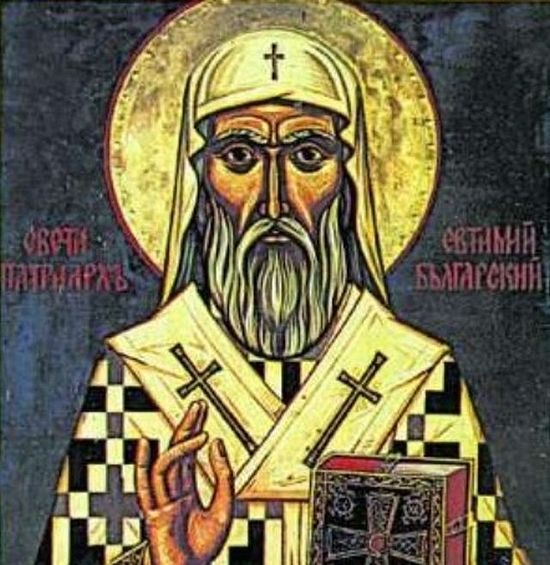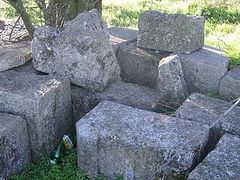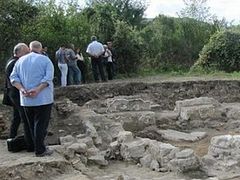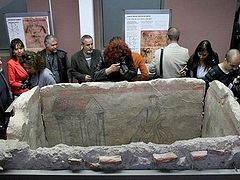Source: Archaeology in Bulgaria
February 29, 2016
Kirkovo, Bulgaria’s southernmost municipality bordering Greece, and located some 20 km north of the Aegean coast, is going to restart the archaeological excavations of a medieval Christian monastery in search of the grave of St. Patriarch Evtimiy (Euthymius) of Tarnovo (served 1375-1394), the last head of the Bulgarian Orthodox Church in the Second Bulgarian Empire (1185-1396).
“This is a church and a monastery complex from the 11th-12th century AD. We are already conducting intensive talks about [the excavations]," Kirkovo Mayor Shinasi Suleiman says about the archaeological monument located near the town of Dobromirtsi, as quoted by local news city Kmeta.
He notes that one of the priorities of Kirkovo Municipality is the development of cultural tourism, and his administration plans to set up a tourism information center, and to establish a map of all tourist, archaeological, cultural, and historical sites and monuments in the municipality.
Unfortunately, one of the landmarks in Kirkovo Municipality which could have attracted tourists, an Ancient Roman arch bridge near the town of Drangovo, has recently been completely destroyed by looting treasure hunters.
Mayor Suleiman also points out that with Kirkovo Municipality has become an attractive destination for Greeks after the opening of the Makaza – Nymfaia border crossing point between Bulgaria and Greece in 2013, which goes through the Makaza Pass in the Rhodope Mountains.
He adds that Kirkovo is considering joint cultural tourism projects with two Greek municipalities – Xanthi and Maroneia.
Bulgarian archaeologist Prof. Nikolay Ovcharov from the National Institute and Museum of Archaeology in Sofia, who has been excavating the ancient and medieval rock city of Perperikon (Perperik), a major archaeological site, and the St. John the Forerunner Monastery, both of which are located in the Eastern Rhodope Mountains, in the same region as Kirkovo, announced as early as January 2016 his plans to excavate the ruins of the medieval monastery near Dobromirtsi.
He thinks he might find there traces of the presence of the last head of the Bulgarian Orthodox Church in the Second Bulgarian Empire, Patriarch Evtimiy.
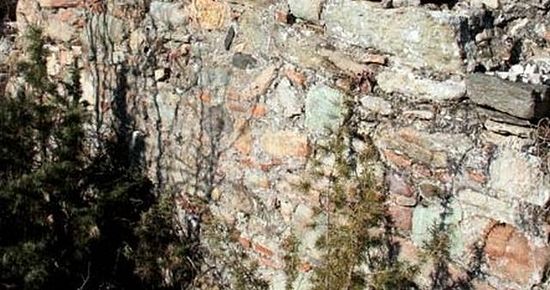 The ruins of the medieval monastery near Bulgaria’s Dobromirtsi, Kirkovo Municipality. Photo: Nov Zhivot
The ruins of the medieval monastery near Bulgaria’s Dobromirtsi, Kirkovo Municipality. Photo: Nov Zhivot
St. Patriarch Evtimiy (Euthymius) of Tarnovo (ca. 1325 – ca. 1402-1404) was one of the most important figures of the Second Bulgarian Empire and in the Eastern Orthodox world during his time. Even before becoming the Patriarch, he was the founder of the Tarnovo Literary School, and carried out a language reform of Old Bulgarian which also influenced the literary traditions in the Russian principalities, Serbia, Wallachia, and Moldova.
A supporter of hesychasm, a mystical prayer tradition in the Eastern Orthodox Church, today Evtimiy might be the most well-known of the medieval Bulgarian patriarchs, partly because of his role in defending the capital Tarnovgrad (today’s Veliko Tarnovo) against the invading Ottoman Turks.
In the absence of the secular ruler, Tsar Ivan Shishman (r. 1371-1395), the Patriarch commanded the heroic defenses of Tarnovgrad during a three-month siege in the spring and summer of 1393.
After the Ottomans conquered the city, slaughtered much of the population, and executed in public its most important boyars (nobles), they exiled Patriarch Evtimiy somewhere in today’s region of Thrace. It has been assumed that he died in exile in the Bachkovo Monastery, today in Southern Bulgaria, but this hypothesis remains unproven.
Archaeologist Nikolay Ovcharov believes that he might discover evidence about the last days of Patriarch Evtimiy’slife, and possibly even his grave, at the medieval Christian complex near Dobromirtsi, Kirkovo Municipality.
The monastery was excavated for three seasons back in the 1960s by Bulgarian archaeologist Ivan Balkanski, who also discovered the rock city of Perperikon. However, the results from his research were never published, and no excavations of the monastery have been carried out ever since.
Ovcharov says that during the construction of a mosque (this Bulgarian region has large Muslim ethnic Turkish population), locals discovered the grave of a senior Christian clergyman.
This story was first recorded in 1928 by local historian Nikola Ivanov when a local teacher said the remains of the clergyman and the funeral inventory were taken by a rich Turkish man, meaning the discovery might have been made before 1912 when today’s Kirkovo Municipality was still part of the Ottoman Empire.
“During the construction of a mosque in the nearby town of Benkovski, they stumbled upon the funeral of a richly clothed senior Christian priest wearing a miter on his head and a bishop’s attire. A lot of people from the region are telling stories about this event which makes me believe it was not made up. To this day there are stories that the miter is being carried up and down the Rhodope Mountains, and has healing qualities," Ovcharov has stated, as cited by local news site Rodopi24.
“According to Gregory Tsamblak (a disciple of Evtimiy, a Bulgarian writer and cleric, metropolitan of Kiev in 1413-1420 – editor’s note), [Patriarch Evtimiy] was exiled in Macedonia, which in the Middle Ages was a name denoting of the territory between Thessaloniki and Adrianople, including the Southern Rhodope Mountains… Why wouldn’t it be possible to find the grave of Patriarch Evtimiy precisely in this monastery?" he adds.
The archaeological excavations of the medieval monastery near Dobromirtsi, Kirkovo Municipality, will be held in May-June 2016, and will be funded by the local authorities with BGN 50,000 (app. EUR 25,000).
The Nov Zhivot, a local newspaper based in the nearby city of Kardzhali, reports that the medieval monastery to be excavated is located in an area known as Kliseto, which is dotted with pits “like Swiss cheese" dug up by looting treasure hunters.
Walls of the church of the medieval monastery are said to be standing at a height of 1.5 meters, and the ruins are covered with vegetation. Stone and ceramic fragments can be found lying around the place.
Back in 1925, local historian Nikola Ivanov recorded a local legend saying that after the fall of the Bulgarian capital Tarnovgrad (Veliko Tarnovo), Patriarch Evtimiy was brought to today’s town of Benkovski, Kirkovo Municipality,which was part of convent belonging to Bachkovo Monastery; he allegedly served and died there, and was buried in the altar of the local church.

